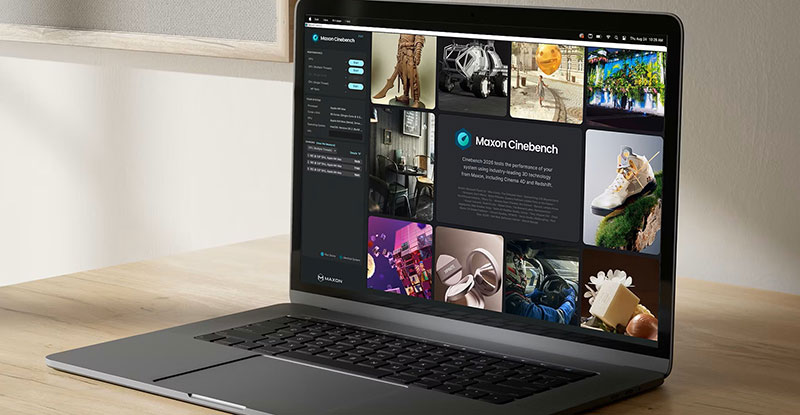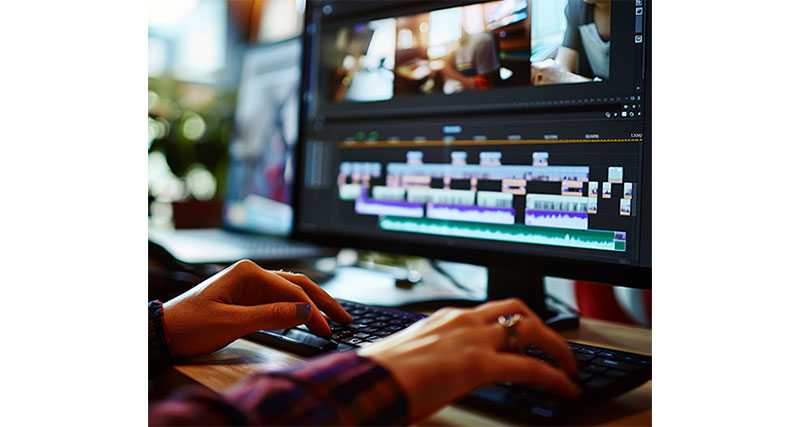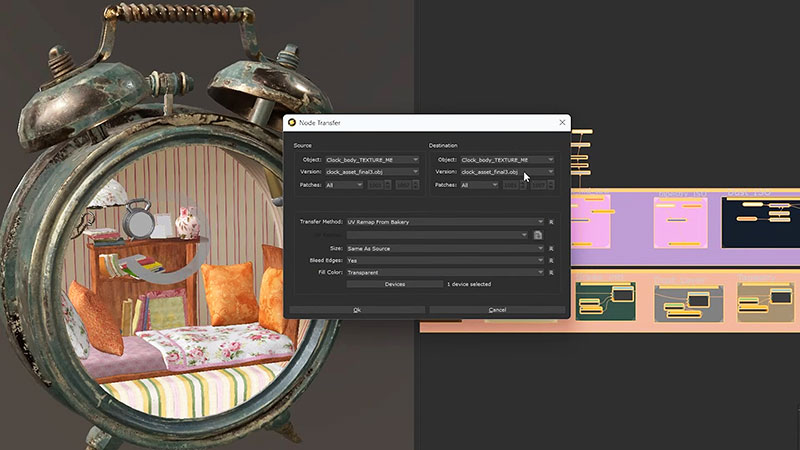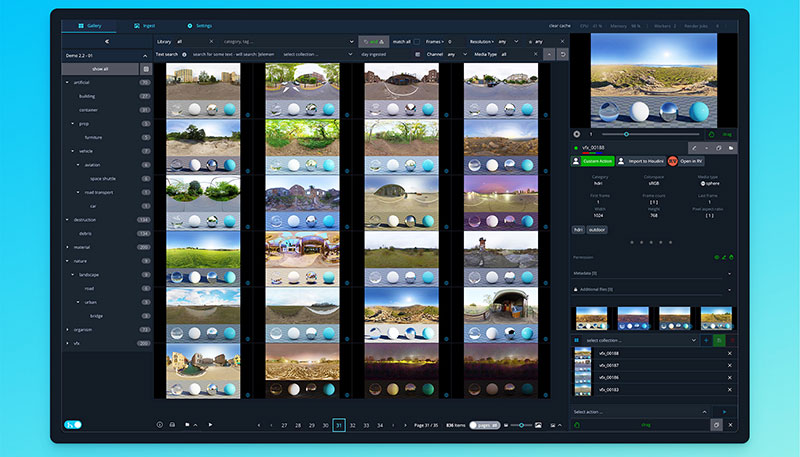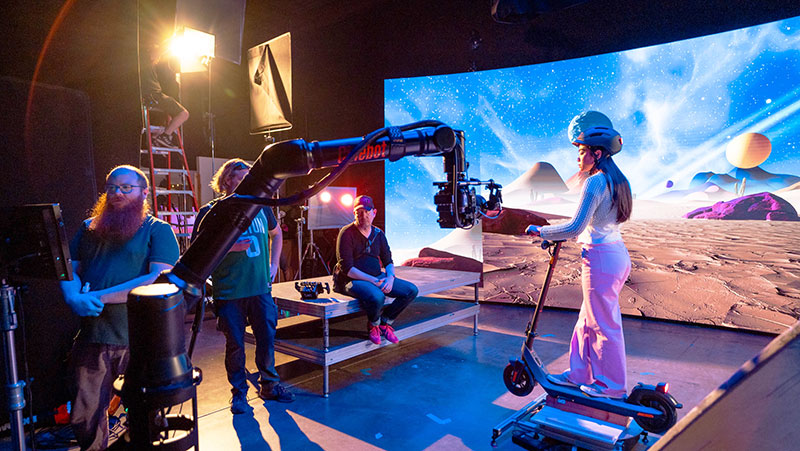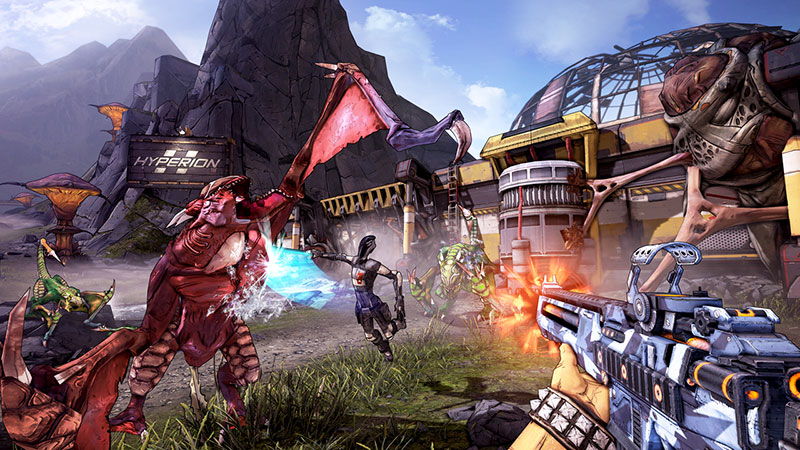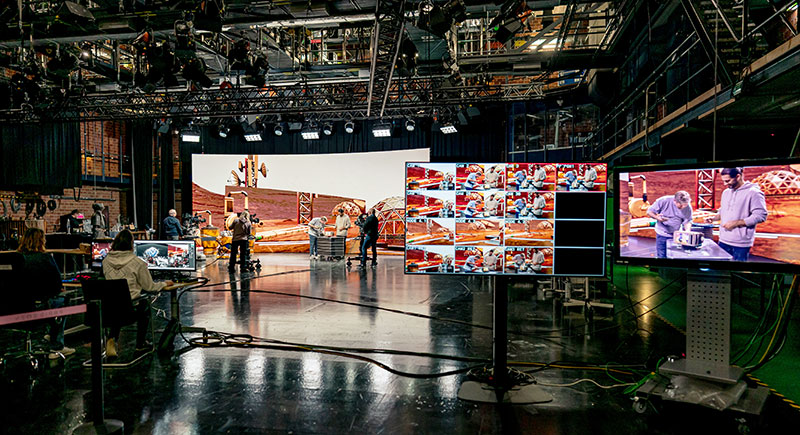Foundry’s look development and lighting tool Katana 6.0 has new performance monitoring tools and visibility into material set-ups to speed up manual tasks.
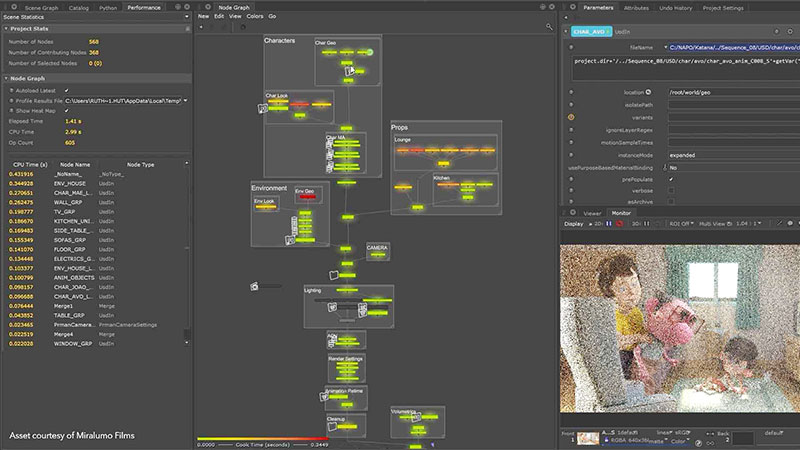
Performance Tab
Foundry’s look development and lighting tool Katana 6.0 has new performance monitoring tools and visibility into material set-ups to speed up manual tasks.
Katana 6.0 aligns with Nuke 14.0 and Mari 6.0 on software standards including VFX Reference Platform 2022 and USD 22.05. Beyond Katana 6.0, work is underway to introduce native USD workflows with a shared approach to the new USD-native 3D system in Nuke.
Katana’s new Performance tab helps to keep track of the scale of scenes and debug them more efficiently. It is designed to indicate where Katana is taking the most time to process a scene, and how processing times could be shortened to achieve a faster time to first pixel. Users can see how many nodes exist in the project, with the number of contributing and selected nodes.
Users can also interpret profiling information to understand where bottlenecks may exist in the Node Graph. To check which nodes are taking more CPU time, the nodes are listed from most to least ‘expensive’. This information can also be visualised directly on the node graph using a heat map, which changes the nodes’ colours to show which nodes are the most expensive and where users can focus on optimisation. The colour scheme can be customised to emphasise subtle changes between nodes.
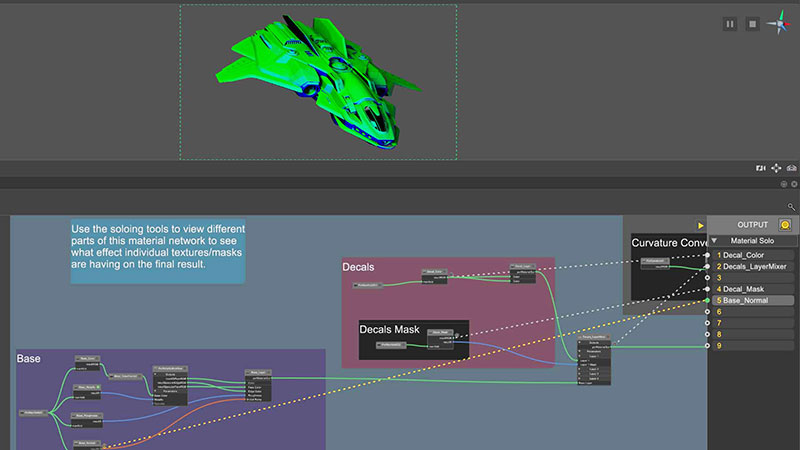
Material Solo
Material Solo is a new feature that gives artists immediate visibility over the components of their material setups, and an understanding of how each node impacts the final result. This visibility makes it possible to quickly isolate and debug complex material networks and take advantage of previewing any section, at any time, for a more efficient workflow.
Katana 6.0 extends its look development toolset with LiveShadingGroups based on Macros and User Parameters developed for Katana 4.5. It also supports collaboration by allowing users to share and reuse their work between projects, assets or other artists, in effect simplifying workflows recycling work. Any changes made in a LiveShadingGroup will automatically be applied to other scenes that contain it, making manual updates when reopened unnecessary and saving time.
Also starting with functionality originally introduced in Katana 4.5, the NetworkMaterialEdit Material Interface is used to modify and manage the material interface within the NetworkMaterialEdit node. Not restricted to working in a linear way, users now have more options to modify their setups downstream. Modifications can be be made even when the original material not available, and users will have more flexibility when working with materials. www.foundry.com
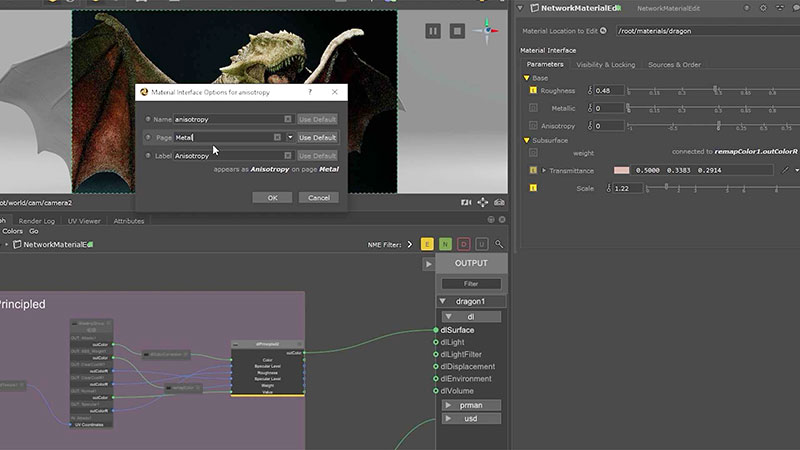
NetworkMaterialEdit interface


